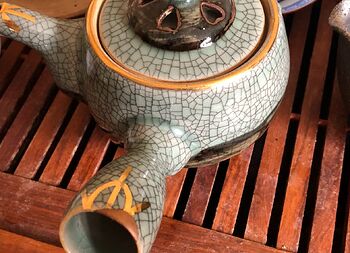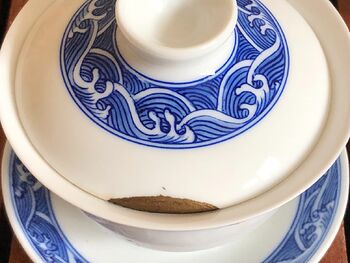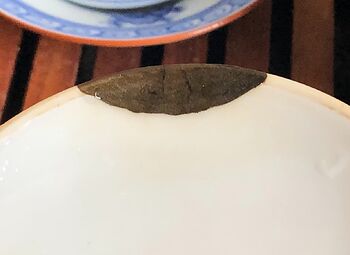Wow very nice! ![]()
Thanks. Let’s hope this time I didn’t rush it too much and the kintsugi is stable.
Yeah. People call me crazy because I use a 150 euro teapot… Been using it for over a decade now, dishwasher and all.
I’m always extra careful with it. But now thanks to you if something would happen I know there is a solution!
Nice teapot. Well, there are many people crazier than us. Notice that clay teapot on the previous image?
I bought it for ~$250. I hope I don’t break it neither.
Yeah. I hop your teapot lives long and last.
Oh wow, yours is nice!
I like spending a bit of money on these everyday items. Makes your day more enjoyable… ![]() But so far it has been a good buy, because others might have already bought several pots over the lifetime of mine. Because they broke, or whatever.
But so far it has been a good buy, because others might have already bought several pots over the lifetime of mine. Because they broke, or whatever.
Mine is also very practical - tea stays hot for a long time, easy to pour and so on. And I still like how it looks.
I think I noticed that too. It has a special sprout which looks like it will give the user a little bit more control in the pour and maybe reduce dripping.

Of course, just because it looks that way, you won’t know until you use it.
I also have the matching cups and saucers… ![]()
Again, nifty design in that the porcelain for the cups are much thinner, meaning you can drink tea more quickly after pouring…
So nice to talk about teapots in depth… ![]()
This looks really good! Thank you for sharing a detailed write up and photos. I’m quite fascinated by this whole process.
Thank you for sharing. You got a great result.
I have one broken vase I would like to fix and one plate with a very similar chip that you posted about that I will start with repairing. Your pictures were very clear, but did you by any chance videotape your process? If you did, sharing a link to at would be awesome!
This is great. Thinner cups are great. I took a lot of the website and it has some really cool design. The black one is kind of expensive, not sure why it costs 500 Euro, where as the Strip one is only 300 Euro and looks more interesting to me.


No, I have not taken a video of myself doing it. Moreover, I am new to this. However, this is a good introduction video from Mejiro-Japan.
More than a year ago, a hanging kitchen cupboard fell and crushed on the floor, due to a humidity issue in the wall. Although the insurance company eventually compensated, I still feel a sense of loss—many of the ceramics were souvenirs from various travels or gifts from friends. At the time, I was so upset that I simply put all the broken pieces into a few bags and left them in the garage. I think the time has come to start a repair project—at least for a few of them.
I plan to use epoxy method and may also consider traditional methods for certain pieces. The videos posted in the thread are very useful to learn how to work neatly. I’ve tried the modern method, but found it a bit messy, it seems a bit less minimalist when compared to the Japanese method that you can use the sand paper to get rid of the extra bits.
Did your second reparation and the other reparations last?
Hi. I don’t even remember what exactly I meant by the first kintsugi was not stable. Anyway, what found out is that for my kintsugi-ware, they are physically holding the shape and color if they are applied in non-heated areas, like this handle.
For the gaiwan, the part that touches the hot tea loses its color over time - getting dull - probably due to both the heat and acidic tea liquor. Physically, it is still holding its shape.
I have a few more chipped ceramic ware and will try to fix them when I have a few ones.






